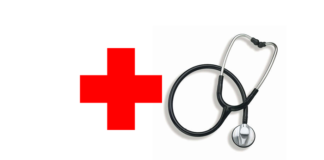The global pandemic has highlighted the cracks in the global healthcare system and exposed many of its structural and technological challenges. With shelter-in-place orders being mandated in many locations throughout the globe, and hospitals being overwhelmed with an influx in patients, the healthcare industry needs to implement fast, efficient and safe ways to care for their patients – virtually and in-person. However, according to a new global research report commissioned by SOTI, North American healthcare workers do not have the technology needed to support critical patient care. This research was conducted across seven countries, U.S., Canada, UK, Germany, France, Sweden and Australia, among homecare workers, visiting nurses, nurses in the field in both private and public sectors.
The SOTI report, Critical Technology for Critical Care: State of Mobility in Healthcare 2020/21 found that half of healthcare employers in North America need to invest in new or better technology to improve the patient care experience. In fact, 77% of healthcare workers stated they struggle with technology setups in the field and 50% revealed that trying to use their employer’s technology wastes time they could be using to help patients.
“Mobile technology has never been more business-critical in the healthcare industry than it is today. For years, we at SOTI have been helping equip healthcare organizations with reliable and efficient digital technology needed to better serve patient needs. This pandemic has only heightened the major gaps in organizations that have not prioritized integrated mobile technology solutions,” said Shash Anand, VP of Product Strategy, SOTI. “Implementing mobile technology solutions provides healthcare workers with a seamless, safer and faster patient experience and equips them with the tools needed to provide critical care.”
Anand continued, “Mobile technology can help to reduce downtime and automate many of the activities that are keeping healthcare workers away from their patients. Whether it’s providing apps that can easily capture and share patient healthcare information such as lab results or troubleshooting devices in the field. Having immediate accessibility to business-critical tools where every second counts is now essential and can be done by implementing a mobile device into the daily activities of a healthcare employee.”
Anand concluded, “The global pandemic has shown the healthcare industry that technology is critical. While during the pandemic, a third indicated that new systems and technology were introduced, 71% of U.S. healthcare workers said their technology and systems were not prepared to manage any situations related to COVID-19. This number increased in Canada to 78%.”
The Critical Technology for Critical Care: State of Mobility in Healthcare 2020/21 Report can be downloaded here.
Report Methodology
Commissioned by SOTI, Arlington Research, an independent market research agency, conducted research to provide the content for the State of Mobility in Healthcare Industry Report 2020/21. 475 interviews were conducted using an online methodology with homecare workers, visiting nurses, nurses in the field (in both private and public) across seven countries between September 28 and October 7, 2020. All respondents are aged 18 and over, working in companies with 50 or more global employees. The research provides an insight into how technologically equipped healthcare workers are, the key mobility challenges they are experiencing on the frontline and how well their organizations have fared during the COVID-19 pandemic.
For more information, please visit www.soti.net












